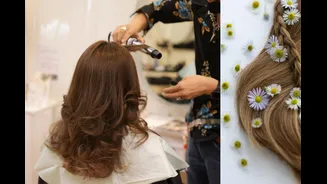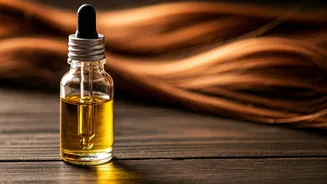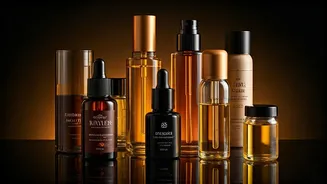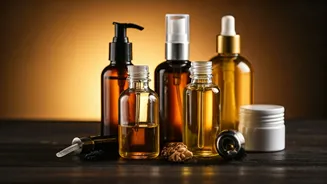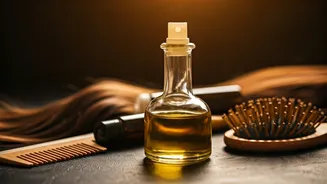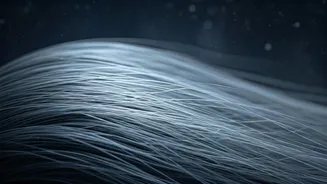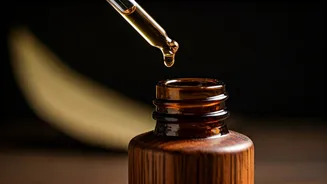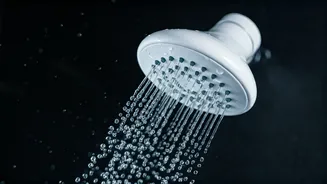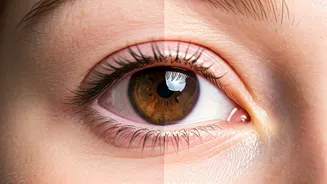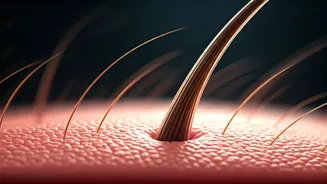In the pursuit of perfect hair, many people fall into the trap of over-care. Daily washing, multiple serums, leave-in masks, weekly spa treatments, heat styling, and chemical smoothening all seem like
maintenance but often become the reason strands start falling faster. Dermatologists now call this cosmetic overuse-induced hair fall, a growing problem among urban adults, especially women under 40 who experiment heavily with hair products.
The scalp, like skin, thrives on balance. When it’s stripped too clean, overloaded with products, or constantly exposed to stress and heat, the natural ecosystem that supports hair growth begins to collapse.
What Science Says About the Scalp
A healthy scalp maintains a microbiome — a mix of oil, beneficial bacteria, and a thin protective layer that keeps follicles nourished. A 2023 study in the International Journal of Trichology found that frequent washing with harsh surfactants and silicone-heavy conditioners disrupts this balance, weakening the follicular stem cells responsible for hair regeneration.
When hair follicles enter a state of inflammation or nutrient deprivation due to this disruption, the body triggers a process called telogen effluvium — premature shedding of hair in its resting phase. The fallout can appear sudden, but it’s often the cumulative result of months of over-care.
Over-Washing: Clean, But Costly
The most common mistake is excessive washing. The scalp naturally produces oil that lubricates hair and keeps it flexible. When you wash too frequently, especially with strong shampoos containing sulphates or parabens, this oil is stripped away. The scalp compensates by producing even more sebum, creating a cycle of greasiness and dryness.
According to a 2021 clinical review by the Indian Journal of Dermatology, washing hair more than four times a week correlates with increased scalp sensitivity and breakage in individuals with normal or dry hair types.
The ideal frequency depends on hair texture and climate: oily scalps benefit from three to four washes a week, normal hair types from two to three, and dry or curly hair from one to two washes.
If your hair feels greasy in between, opt for a mild, sulphate-free shampoo and lukewarm water instead of daily washing.
Over-Oiling and Product Build-Up
Traditional oiling, when overdone, can also harm. Leaving heavy oil on the scalp overnight, especially in humid conditions, clogs follicles and attracts dust. When not rinsed properly, it leads to dandruff and fungal infections that weaken roots.
Dermatologists recommend oiling lightly once a week, keeping it on for no more than 30 to 45 minutes before shampooing. Coconut, almond, and argon oils remain good choices, but moderation is key.
Frequent layering of serums, leave-in conditioners, and sprays leads to product build-up. This coating suffocates the hair cuticle, prevents moisture absorption, and causes dullness and breakage. Once a month, use a clarifying shampoo or apple cider vinegar rinse to remove residue and let your scalp breathe.
Heat Styling: The Silent Culprit
Repeated use of hair dryers, straighteners, and curlers gradually weakens keratin, the protein that forms the structural backbone of hair. The cuticle, the outermost layer, begins to chip, making hair porous and prone to breakage.
A 2020 study in Clinical, Cosmetic and Investigational Dermatology reported that hair exposed to heat above 200°C loses up to 30 percent of its natural moisture, while protein bonds begin to fracture irreversibly.
If you must style, follow the 60/60 rule: do not exceed 60 seconds of continuous heat on one section and keep the temperature below 160°C for fine hair and 180°C for thick hair. Always use a heat-protectant spray and avoid styling more than twice a week. Air-drying remains the healthiest option for most hair types.
Chemical Treatments and the Protein Paradox
Modern salon treatments like keratin, smoothening, rebonding, and colouring promise instant shine but frequent exposure to these chemicals erodes the hair shaft over time. Hydrogen peroxide, ammonia, and formaldehyde derivatives, commonly found in such products, break down keratin bonds to reshape the hair.
A 2022 review in Dermatologic Therapy highlighted that nearly 35 percent of salon-treated women experience significant thinning or breakage within six months of repeated procedures. The scalp’s lipid barrier gets compromised, leading to chronic irritation and shedding.
Experts suggest spacing out chemical treatments at least six months apart, using sulphate-free post-care products, and incorporating weekly protein masks to rebuild hair integrity.
The Problem with an Overly Clean Scalp
A common misconception is that a squeaky-clean scalp is a healthy scalp. In reality, over-exfoliation and frequent scrubbing damage the scalp barrier, making it vulnerable to infections.
Experts caution against using salt or sugar scrubs more than once a month. Even natural acids like lemon juice, when overused, can alter scalp pH and trigger inflammation.
Nutrition and Stress: The Forgotten Links
Even with a perfect routine, external care means little without internal nourishment. Over-care often masks underlying issues like protein deficiency, iron loss, or stress-induced hormonal changes. Low ferritin levels (below 30 ng/mL) are directly linked to diffuse hair shedding, as found in multiple Indian studies.
Ensure your diet includes protein from eggs, lentils, soy, and fish; iron from spinach, beetroot, and pomegranate; omega-3 fats from walnuts, flaxseeds, and oily fish; and vitamin D and B12 supplements if tested low.
Pairing this with regular sleep and reduced stress hormones through exercise or meditation improves hair regrowth rates more effectively than any topical product.
Finding the Right Balance
Hair health isn’t about doing more, it’s about doing what’s necessary, consistently and gently. Dermatologists recommend this minimalist approach for most people:
Weekly Plan for Balanced Hair Care
- Wash: Two to three times a week with mild shampoo
- Condition: After every wash, focusing on the mid-lengths and ends
- Oil: Once weekly for 30–45 minutes pre-shampoo
- Style: No more than twice a week, with heat protection
- Treatment: One nourishing or protein mask every 10–15 days
- Detox: Use a clarifying rinse once a month to remove build-up
This rhythm respects your scalp’s biology rather than fighting it.
The Emotional Side of Over care
Hair care has become more emotional than functional – tied to identity, social media trends, and self-esteem. Dermatologists note that many patients fall into a loop of panic-buying new products every time they spot hair fall, inadvertently worsening the problem. The truth is that hair fall from over-care usually reverses once you give your scalp a break and return to a simpler routine.
In an age of beauty overload, restraint has become the real luxury. Hair doesn’t need constant intervention — it needs consistency, nutrition, and rest. Over-care leads to imbalance; balance brings back strength and shine.
